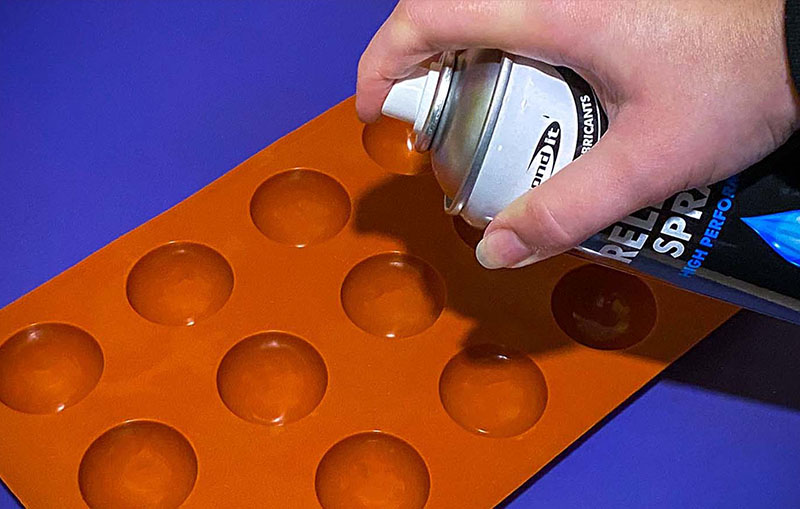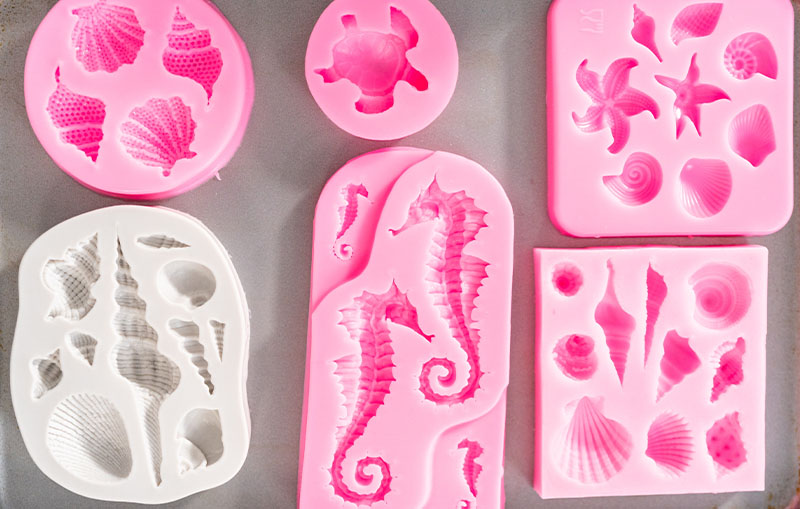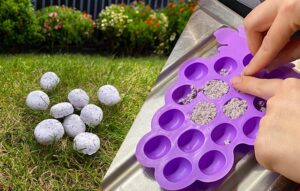Maintaining silicone moulds is massively important to ensure their longevity and optimal performance in various industries.
Silicone moulds come in various shapes and sizes and can be used to create an array of objects, from sweets and chocolates to soap and candles. They are widely used in the food industry, crafting, and manufacturing industries.
Silicone moulds are popular in the food industry due to their non-stick and heat-resistant properties, making them ideal for baking, chocolate and candy making, and even for freezing food items.
Craft silicone moulds are used to make various decorative items such as candles, soaps, and resin art. They offer a unique way to create detailed and intricate shapes that are difficult to achieve using other mould-making materials. Additionally, they are reusable and easy to clean, making them a popular choice.
In the manufacturing industry, silicone moulds are used to create a variety of products such as car parts, medical devices, and consumer products. They are ideal for creating complex and precise shapes, and their ability to withstand high temperatures makes them a popular choice for industrial use.
In this article we’ll discuss maintaining silicone moulds, including whether they need to be oiled, how to prevent them from drying out or sticking, and how to extend their lifespan. We will also answer common questions such as the lifespan of silicone moulds and whether they can go moldy.
Do Silicone Moulds Need to be Oiled?
Silicone moulds do not necessarily need to be oiled. In fact, many manufacturers recommend not using any oils or sprays on the moulds as they can cause buildup and damage the silicone material over time. However, some individuals still prefer to use oil to prevent their silicone moulds from sticking.
Using oil on silicone moulds has its pros and cons. On the one hand, oil can help prevent the silicone from sticking to the mould, making it easier to remove the finished product. It can also help distribute heat evenly throughout the mould, resulting in a better end product. On the other hand, oil can cause buildup over time, which can damage the silicone material and reduce its lifespan. Additionally, oil can leave a residue on the finished product, affecting its taste and appearance.
If you decide to use oil on your silicone moulds, it’s essential to use the right type of oil. Avoid using cooking sprays or oils that contain additives such as lecithin, as they can cause buildup and damage the mould. Instead, use a food-grade oil such as vegetable oil.
Alternatively, you can use other methods to prevent silicone from sticking to the moulds. These include dusting the moulds with cornstarch or using a mixture of equal parts water and white vinegar to clean the moulds before use. Using a silicone mould release spray is also an option, but make sure to choose one that is specifically designed for use with silicone moulds.

How to Keep Silicone Moulds from Drying Out?
Silicone moulds are naturally resistant to water and moisture, but they can still dry out over time if not properly maintained. There are several reasons why silicone moulds may dry out, including:
- Exposure to heat: Silicone moulds can dry out when exposed to high temperatures for extended periods. This can cause the silicone material to become brittle and prone to cracking or tearing.
- Exposure to air: When silicone moulds are not in use, they can dry out if exposed to air for extended periods. This can cause the silicone material to lose its flexibility and become stiff and difficult to use.
- Improper cleaning: Using harsh chemicals or abrasive materials to clean silicone moulds can cause the material to dry out and lose its flexibility. It’s important to use gentle cleaning methods, such as warm water and mild soap, to clean silicone moulds.
- Storage conditions: Silicone moulds should be stored in a cool, dry place away from direct sunlight. Exposure to heat or moisture can cause the moulds to dry out and lose their flexibility.
To prevent silicone moulds from drying out, it’s important to store them properly and take steps to protect them from exposure to heat and air. You can store silicone moulds in an airtight container or plastic bag to prevent them from drying out when not in use. It’s also a good idea to avoid exposing silicone moulds to high temperatures, such as those produced by an oven or dishwasher. When cleaning silicone moulds, use gentle methods and avoid using harsh chemicals or abrasive materials. With proper care and maintenance, silicone moulds can last for years and produce consistent, high-quality results.
How to Keep Silicone from Sticking to Silicone Moulds?
One of the biggest challenges when using silicone moulds is preventing the silicone from sticking to the mould. Here are some of the most common causes of silicone sticking to moulds:
- Improper preparation: If the mould is not properly cleaned and dried before use, or if it is not properly greased, the silicone can stick to the mould and be difficult to remove.
- Poor quality moulds: Low-quality silicone moulds can be prone to sticking, even if they are properly prepared. Look for high-quality silicone moulds that are designed for the specific purpose you have in mind.
- Over-filling the mould: Over-filling the mould with silicone can cause it to stick to the sides of the mould. To avoid this, only fill the mould to the recommended level.
- Incorrect curing time: If the silicone is not given enough time to cure, it may not fully set and can stick to the mould. Be sure to follow the manufacturer’s instructions for curing time.
To prevent silicone from sticking to silicone molds, it’s essential to properly prepare the moulds before use. This includes cleaning and drying the mould thoroughly and using a food-grade grease or oil to prevent sticking. Applying a thin layer of oil or grease to the mould can help create a barrier between the silicone and the mould, making it easier to remove the finished product. It’s also important to avoid over-filling the mould and to follow the manufacturer’s instructions for curing time.
What is the Lifespan of Silicone Moulds?
The lifespan of a silicone mould can vary depending on a variety of factors, such as the quality of the mould, frequency of use, and the type of material being used in the mould.
In general, high-quality silicone moulds that are properly cared for and used can last for several years. With proper cleaning, storage, and usage, silicone moulds can maintain their shape and durability, producing consistent and high-quality results over time.
However, it’s important to note that silicone moulds are not indestructible and will eventually wear out with regular use. The lifespan of a silicone mould can also be affected by the type of material being used. For example, if you’re creating your own silicone moulds, its important to choose the right silicone material in relation to what you’ll be using that mould for.
Maintaining silicone moulds is hugely important to their lifespan. Follow the manufacturer’s instructions for cleaning, storage, and usage, and avoid exposing them to extreme temperatures or UV light. When not in use, store them in a cool, dry place away from direct sunlight or moisture.
How to Extend the Life of Silicone Moulds?
- Proper cleaning: After each use, wash the moulds with warm, soapy water and dry them thoroughly before storing them. Avoid using abrasive cleaners or scrubbers that can damage the surface of the mould.
- Proper storage: Store the moulds in a cool, dry place away from direct sunlight, heat, or moisture. You can also store them in an airtight container or plastic bag to protect them from dust or debris.
- Proper usage: Avoid using sharp or pointed tools to remove the finished product from the mould, as this can damage the surface of the mould. Instead, use gentle pressure to push the product out of the mold.
- Avoid exposure to extreme temperatures: Extreme temperatures can cause silicone moulds to deteriorate more quickly. Avoid exposing them to temperatures above 250°C or below -40°C
- Avoid exposure to UV light: UV light can also cause silicone moulds to deteriorate over time. Avoid exposing them to direct sunlight or UV light sources.

Why Does My Silicone Keep Going Moldy?
Mold growth on silicone moulds can be a frustrating and unsanitary issue, especially when using them for food-related applications. Here are some common causes of mold growth on silicone moulds:
- If silicone moulds are not properly dried after use, moisture can remain trapped inside the mould and promote mold growth. Make sure to thoroughly dry the moulds before storing them.
- High humidity can also contribute to mold growth on silicone moulds, especially in warm and humid climates. If you live in a humid climate, it’s important to take extra precautions to keep your silicone moulds dry and stored properly.
- Silicone moulds can easily pick up contaminants from the environment or from the material being used in the mould. Make sure to clean and sanitize the moulds after each use to prevent the growth of mold.
- Lack of use: If silicone moulds are not used frequently, they can become a breeding ground for mold. It’s important to clean and dry them regularly, even if they are not being used.
- Improper storage: Improper storage of silicone moulds can also contribute to mold growth. Storing them in a damp or humid environment can promote the growth of mold. Make sure to store them in a cool, dry place away from moisture and direct sunlight.
If you notice mold growth on your silicone moulds, it’s important to properly clean and sanitize them before using them again. Use a mixture of vinegar and water or a specialized cleaning solution designed for silicone moulds to clean and disinfect them thoroughly. It’s also important to dry them thoroughly before storing them to prevent the growth of mold.
To Recap
Maintaining silicone moulds is essential for their longevity and effectiveness. Here is a recap of the tips and tricks for maintaining silicone moulds:
- Clean silicone moulds thoroughly after each use using warm water and a mild soap or detergent. For tough stains or residue, use a specialised cleaning solution designed for silicone moulds.
- After cleaning, dry your moulds thoroughly using a clean, dry towel or let them air dry before storing.
- Store your silicone moulds in a cool, dry place away from direct sunlight, moisture, and dust. Avoid stacking or crushing the moulds, as this can cause them to lose their shape.
- Avoid using sharp objects or utensils that can scratch or damage the moulds. This can cause the moulds to lose their non-stick properties and affect their overall effectiveness.
- Apply a thin layer of food-grade lubricant or cooking spray to your moulds before use, if necessary. This can help prevent sticking and make it easier to release the contents of the moulds.
- Avoid exposing silicone moulds to extreme temperatures, such as boiling water or freezing temperatures. This can cause them to warp or crack and affect their overall effectiveness.
- Sanitize your silicone moulds regularly using a mixture of vinegar and water to prevent the growth of mold or bacteria.
You can ensure the longevity and effectiveness of your silicone moulds for a variety of applications. Maintaining silicone moulds can also help prevent the growth of mold and bacteria and ensure the safety and hygiene of your products.








